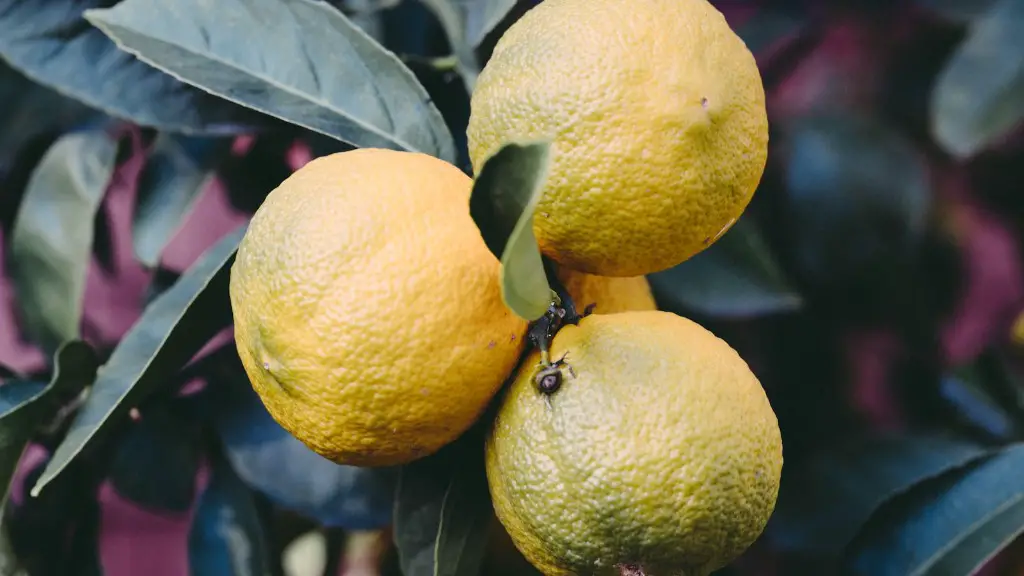Trimming a meyers lemon tree in order to keep it healthy and producing is straightforward but requires regular maintenance. Knowing how and when to properly prune a meyers lemon tree is key for its ultimate success. Here are a few simple steps to help you get started.
Step One: Choose the right time to prune: Early spring is the best time to prune meyers lemon trees and is essential to encourage healthy growth and development, as well as help control the size of your tree. Pruning during late summer or autumn can encourage new growth that won’t have sufficient time to set before the winter.
Step Two: Start with the basics: The most important part of pruning meyers lemon trees is to start with the basics: remove any dead or diseased branches. If branches are discolored, dark and brittle, you can safely remove them without fear of damaging the tree.
Step Three: Select what to keep and discard: You don’t want to remove all the shoots, so it’s important to think before pruning. Pick branches with fruits and flowers and discard those that are weak or diseased. Also, prune branches that cross over each other where they may rub and cause damage.
Step Four: Shape the tree: Pruning is also an important step to get your meyers lemon tree in the shape you would like it. Cut back or remove branches that are too long, or looking a little ‘leggy’ from reaching out to the sunlight. When it comes to shaping the tree, try to keep the heart of your tree open for better air circulation and sunlight penetration.
Step Five: Take it slowly: As with most pruning, less is more. Pruning should be done gradually and lightly, as trying to accomplish too much in one go can be damaging to the tree. Start with very small cuts and then work your way up to larger ones.
Step Six: Clean the tools: Last but not least, make sure you always clean and disinfect your pruning equipment before and after use. This will help ensure you don’t spread diseases or infections between trees.
Tips For Pruning Meyer’s Lemon Trees
Though pruning is a straightforward activity, there are a few key tips to keep in mind when tackling your meyers lemon tree.
Firstly, bear in mind that when pruning a meyers lemon tree, you want to select the right side branches; the weaker ones should be removed to give the healthier branches more space for development. Unhealthy branches won’t produce as much fruit, and can even lead to further disease and disaster for your tree.
Secondly, it pays to take your time and do the job slowly. Don’t rush when selecting which branches to remove and make sure that the remaining branches are balanced throughout the tree. Unbalanced branches can lead to imbalances further down the line and affect the production of fruit.
Thirdly, be kind to your meyers lemon tree; as this tree is relatively delicate, be sure to handle its branches gently and not use force when pruning! If the tree doesn’t respond to your trimming efforts, then it is likely that it is not quite ready for the task yet.
Fourthly, make sure you are wearing gloves; in addition to protecting your hands from potential scrapes and scratches, gloves will also protect them from accidental contact with harmful pests and diseases which thrive in the branches of a meyers lemon tree.
Lastly, if you are unsure about where to start when pruning your meyers lemon tree, it is always a good idea to contact a local professional tree care specialist or arborist who will be able to provide assistance and advice.
Effects of Pruning a Meyer’s Lemon Tree
Pruning a meyers lemon tree can have numerous beneficial impacts, many of which are the result of the increase in air and light circulation across the tree. For example:
Firstly, pruning a meyers lemon tree can result in an increased yield of fruit in addition to increased overall health of the tree itself. By increasing light penetration and air circulation, the tree can photosynthesize more efficiently, leading to more flowers and bigger and juicier fruit.
Secondly, increased pruning can also lead to a more aesthetically-pleasing tree and can help to improve airflow in the tree’s canopy. This helps to reduce the risk of catching fungal infections and other potentially damaging diseases.
Thirdly, pruning a meyers lemon tree can also help to reduce the abundance of pests, such as aphids and whiteflies, that are attracted by overly-thick and unruly canopies of vegetation. Pruning enables more light and air to get to the leaves, making the tree less attractive to pests and helping to keep it healthier.
Fourthly, pruning can also help to reduce the risk of damage to both the tree itself and other vegetation in its vicinity. By keeping your meyers lemon tree pruned and in check, you can prevent it from placing too much weight on nearby trees or structures.
Lastly, pruning a meyers lemon tree regularly can also enable it to better withstand high winds and other adverse weather. A healthy and balanced tree, with a lowered canopy and an even spread of branches and leaves, has a much better chance of surviving these potential disasters.
Useful Pruning Tools For Meyer’s Lemon Trees
Knowing the right pruning tools for your meyers lemon tree is also an important consideration. Here are a few key tools for you to consider when pruning:
Firstly, pruning shear or loppers: these are a standard tool for pruning meyers lemon trees and are used to accurately cut off damaged or excess branches. They are easy to use and should be the first tool you turn to when pruning your tree.
Secondly, dovetail saw: this is a special type of saw that is designed specifically for fine and delicate pruning work. It is ideal for removing small branches and twigs, or for making precise cuts to leaves and smaller growth.
Thirdly, pruning knife: this type of knife is ideal for removing small suckers, roots, and other difficult to reach areas of your tree. It is also perfect for making thin cuts when pruning branches; ideal for keeping your tree balanced.
Fourthly, hedge shear: hedge shears are designed for cutting foliage and trimming the edges of a meyers lemon tree’s leaves. It is generally easier to use than a regular pruning shear and is excellent for working on larger portions of greenery quickly.
Fifthly, pole pruner: this is useful for cutting larger branches that are too high for traditional loppers and shears. It is also useful for pruning branches that have become overgrown and unruly.
Safety Tips For Pruning Meyer’s Lemon Trees
As with any type of pruning, there are a few safety tips you should keep in mind when pruning a meyers lemon tree:
Firstly, wear the right protective clothing; when pruning, be sure to wear sturdy shoes and clear eye protection. Additionally, a long sleeve shirt and long trousers are also recommended to protect against scrapes and cuts.
Secondly, be aware of your surroundings; the task of pruning involves working with tools that can potentially cause serious injuries. Therefore, it is important to watch out for any low-hanging branches or obstacles that may be in the way.
Thirdly, use the right tools; when using tools to prune a meyers lemon tree, be sure to select the right tool for the job. Additionally, make sure that the tools are in good working order and well-maintained.
Fourthly, be gentle; as the meyers lemon tree is a delicate tree, extra care and attention should be taken when pruning; avoiding forceful movements, snipping off excess vegetation and generally being careful of the branches.
Lastly, know when to stop; when pruning a meyers lemon tree, it is important to remember to keep it balanced and symmetrical. When reaching the point of symmetry and balance, it may be time to stop and leave the rest for another day.




